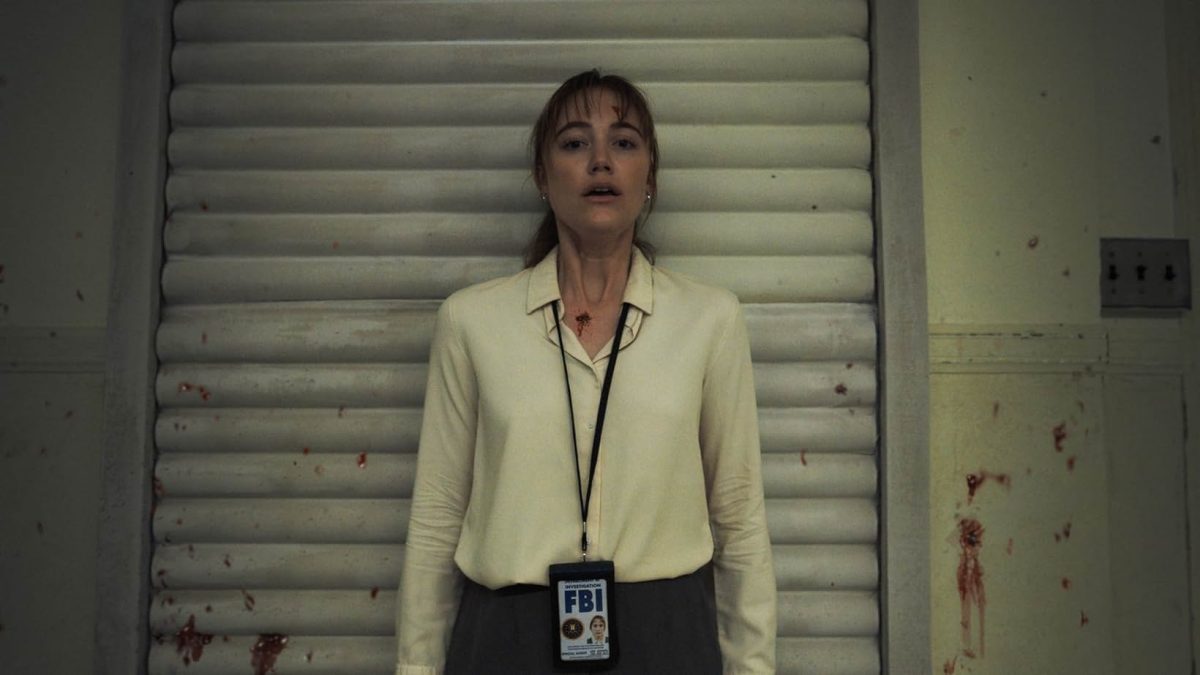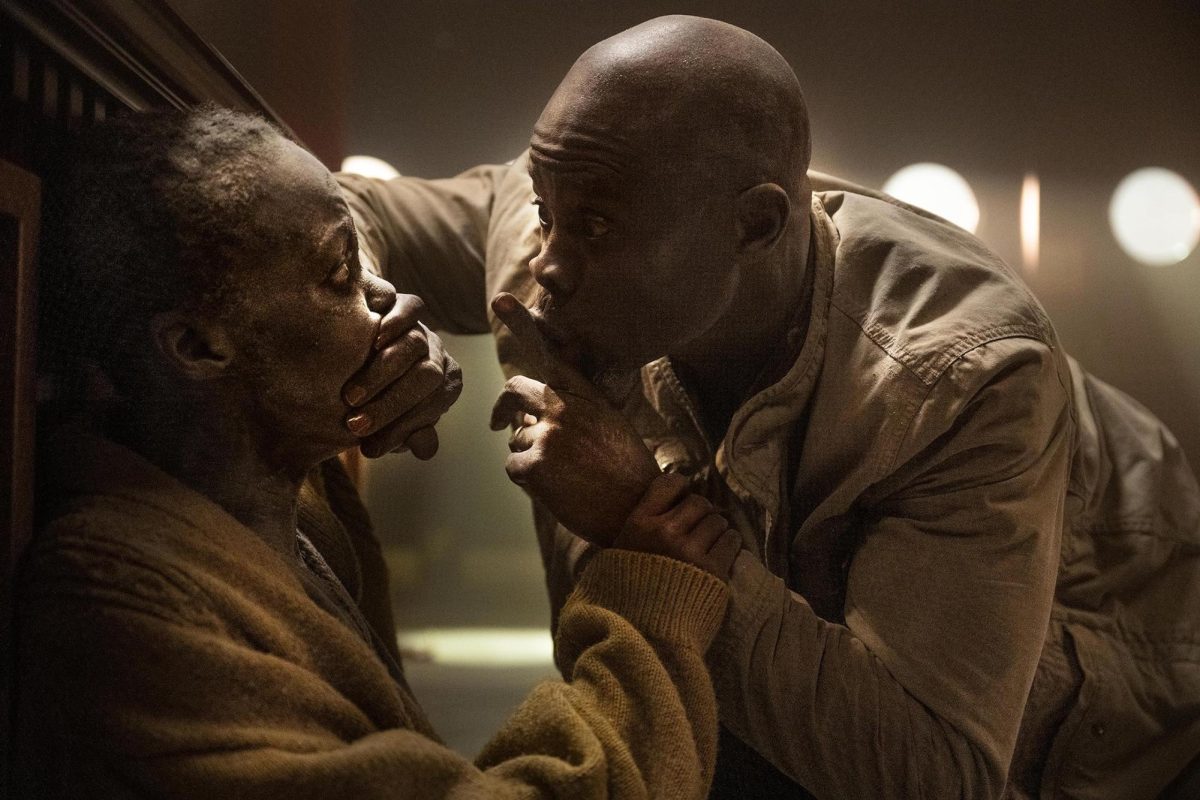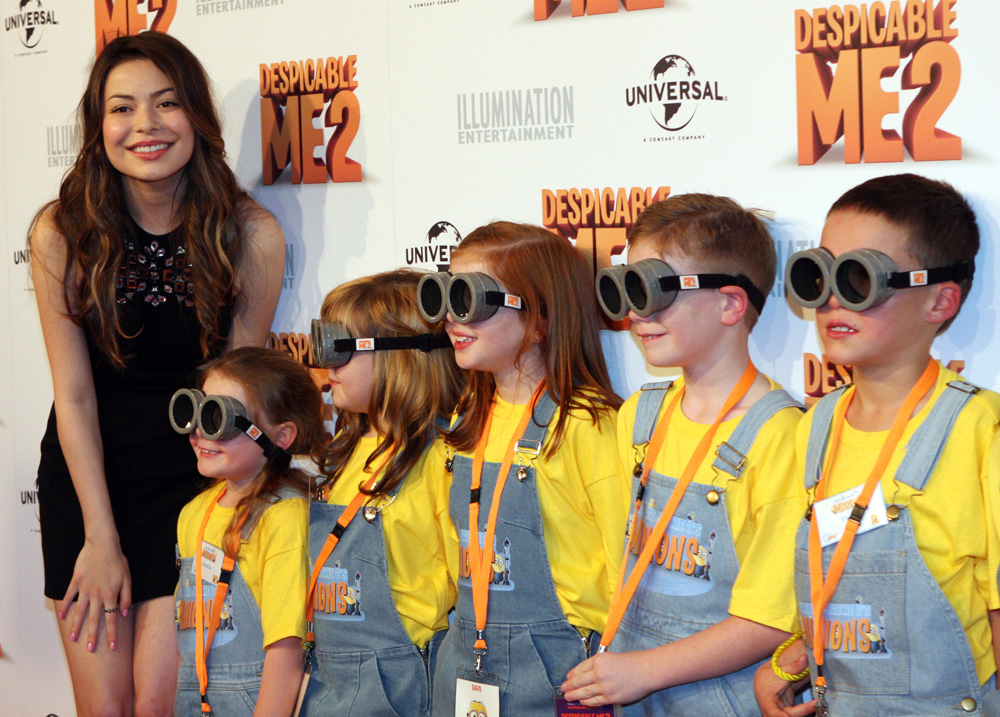**This story contains spoilers.**
“Dr. Strangelove or: How I Learned to Stop Worrying and Love the Bomb” debuted in theaters 60 years ago this January.
Stanley Kubrick’s totemic examination of the intersection between Cold War paranoia, the absurdity of bureaucracy and the male ego remains a powerful cocktail of dark comedy and existential terror.
Loosely based on the novel “Red Alert” by Peter George, the film follows the immediate fallout from Brigadier General Jack D. Ripper’s (Sterling Hayden) ordering of a preemptive nuclear strike on the Soviet Union.
The film is Kubrick’s most overtly comedic. Though there certainly is a thorough line of dark humor embedded into his works, his films exist functionally as dramatic objects whose humor comes from how his characters navigate the world they’re in.
Get The Daily Illini in your inbox!
“Dr. Strangelove” almost functions as the opposite. Even with the threat of a nuclear holocaust so imminent and looming, Kubrick uses this inherent anxiety to compound his scenes and characters with more and more resigned absurdism.
Nevertheless, it does make sense that the project was initially developed as a more straight-down-the-line Cold War thriller. In transitioning the film into a heightened satire, Kubrick was able to much more effectively convey the terrifying uncertainty of the Cold War.
By stripping away more conventional elements typical of this kind of story, “Dr. Strangelove” becomes more relatable despite its over-the-top characterization. With that wall of separation between a film and its audience distorted, the film’s climax — though at times a caricature — almost feels like an inevitability.
Viewing the film 60 years later, despite being decades removed from the Cold War, the film’s characterization of the government still feels relevant. The film’s three locations each give the audience insight into different levels of the military hierarchy and how they function as independent and dependent bodies.
The cinematography, Kubrick’s last film to be shot in black and white, is stark and ingenious in its juxtaposition of composed images and handheld photography.
At Burpelson Air Force Base, shots of General Ripper are held down on the general’s head, enveloped in light and shadow, while the chaos unfurling outside the base is shot in a documentarian manner, emphasizing the disconnect between the actions of the military and the state of the general’s mind.
By contrast, the war room is largely shot wide and in mediums, cutting between views of the room’s architecture and profiles of the president and his advisors surrounded by the geometry of the war plans. The space, feeling both infinite and claustrophobic, only further defines the divide between the upper echelon of the military and the world around them.
Finally, the B-52 bomber set feels the most closed off. In comparison to both the air base and the War Room, the set feels the most cut-off and disparate, informing the film’s climax where the bomber ultimately drops their payload despite receiving orders to abort.
The black-and-white photography further depicts how the film takes the supposed complexity of human conflict and deconstructs it down to its most elemental. The film, with its striking and stark lighting, evokes the fatalism of the noir and how the course of our own action is engineered by the machinations of institutions above us — the terror of nuclear armageddon motivated by the constructed safety of deterrence we institute on ourselves.
“Dr. Strangelove” is inherently a film of dichotomies and dissonances. With a “Peace is Our Profession” sign prominently displayed during scenes of a military base being stormed, Kubrick succinctly illustrates the central lie of deterrence. In mutually assured destruction, governance meant to achieve continued peace only results in further terror.
Equal parts insightful and amusing, the film’s staging of the conflict as a consequence of the male ego in question gives it an added sense of timelessness. We learn that General Ripper’s delusion that the Soviets are fluoridating American water and infiltrating bodily fluids was realized during a moment of his own impotence.
During scenes in the War Room, Kubrick effectively transposes the complexity of the United States and the Soviet Union’s relationship into the childishness of two kids fighting on a playground.
Another reason the film has endured so fervently is Peter Sellers’ iconic performances. Playing Group Captain Mandrake, President Muffley and the titular Dr. Strangelove, Sellers approaches each character uniquely and wholly effectively.
Though the film’s satirical ambitions ultimately foreground the comedy, “Dr. Strangelove” is still existentially terrifying. The ending, which depicts the world being destroyed in a nuclear war, is harrowing and unforgettable. As the men in charge gleefully make sleazy plans to hide out in a bunker colony underground and forcibly repopulate, the rest of the world is left enshrouded in a cloud of radiation.
That such a definite and enormous calamity could have been so simply commenced from one order and so difficult to stop due to an ineffective and disconnected government and military remains bone-chillingly relatable.
As Vera Lynn’s “We’ll Meet Again” plays against footage of nuclear detonations, we realize the ultimate absurdity in humanity’s own propensity to destroy itself. In deftly blending satire with universal anxiety, “Dr. Strangelove” continues to be timeless and blistering.













